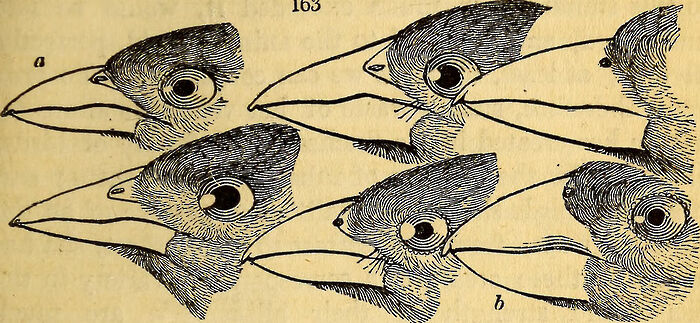Breathing new life into the origin of species at the Museum of Zoology
After a five-year redevelopment, the Cambridge museum which celebrates biodiversity is set to reopen on Friday

After a five-year, £4.1 million redevelopment, the University of Cambridge Museum of Zoology will reopen this weekend as a state-of-the-art celebration of biodiversity.
The museum closed in 2013 for what has been the first total refurbishment of all the displays and backstage stores since the 1960s. This was funded in part by the University as well as nearly £2 million donated by National Lottery players via the Heritage Lottery Fund. Projects undergo a competitive process to be selected for funding from the Heritage Lottery fund. Speaking to Helen Wilson, Chair of the East of England Committee for the fund, on why the Museum of Zoology was chosen, she said that the aim of the Heritage Lottery Fund is to return the money spent on lottery tickets to the public so that they can engage with this “treasure trove” of a museum.
Originally built in 1865 on the same site as it stands today, the Museum of Zoology is rich in history, a touch which hasn’t been lost in the refurbishment. A particularly engaging exhibit is dedicated to books of natural history illustrations, and even contains a fourth edition of Darwin’s On the Origin of Species, with specimens collected on the Beagle voyage and by other renowned naturalists such as Alfred Russel Wallace on display. Many of the exhibits are antiques in themselves and some of the money spent was used to painstakingly clean and conserve every specimen presented, a process still ongoing for some of the two million others behind the scenes.
Entry to the museum is via the impressive whale hall, where the museum’s largest skeleton, that of a 21 metre fin whale, is suspended from the ceiling. A sleek double-height gallery makes up the main area, filled to the brim with specimens and natural history artefacts. The modernised museum also features a new shop, discovery room and plastic-free whale café, which provides a pleasant study space for students.
Visitors will be able to view the finished galleries for the first time, as well as interact with live birds of prey and insects
One of the driving forces behind the refurbishment was to attract visitors of all different backgrounds and expertise to the museum. Clear labelling of all the exhibits explain the processes leading to the biodiversity we see today, and remain compelling from a scientific perspective. Groupings of mammal skeletons according to the branches on the tree of life also make for interesting comparison, and information on the conservation status of each species is particularly thought-provoking.
Other highlights include a spectacular array of insects, some of which were collected by Darwin himself, a colourful display of birds from around the world and several smaller whale skeletons hanging above the main gallery. Some exciting exhibits, however, are not on display yet: a dolphin skull with a piece of scrimshaw on the back, an egg with an example of Darwin’s handwriting, and rare feathers from the extinct Moa bird are among the finds made during the refurbishment.
What can we expect from the renovation? Professor Paul Brakefield, director of the museum said that they “want to tell much more about the research which is going on in the Department of Zoology and the David Attenborough building”. This perspective aims to make the museum “much more interesting and engaging to students”. Professor Brakefield also said “I would hope that the biggest change is that everything looks completely fresh and sparkling and new” with the complete overhaul of all the display cases and lighting fixtures expertly bringing the museum into the 21st century.
The future of the museum will be full of opportunities for students and members of the university. One of the biggest changes since the last opening is the introduction of a team of volunteers, many of whom are associated with the University, to help the museum run smoothly. Volunteering for this museum (and other museums across the University) is an opportunity open to students both in term time and the vacations, and in the future volunteer-dependent features, such as a behind the scenes tour will run.
The museum will be opened officially by Sir David Attenborough, the namesake of the Zoology building, on Friday the 22nd June, in a public event. This will be followed by a weekend of events at the Zoology Live! Festival, where visitors will be able to view the finished galleries for the first time, as well as interact with live birds of prey and insects, and partake in other natural history related activities outside the whale hall. The Museum of Zoology is full of interesting surprises and the free entry makes it well worth a visit.
 News / Cambridge University Press criticises Meta’s ‘dismaying’ use of copyrighted material28 March 2025
News / Cambridge University Press criticises Meta’s ‘dismaying’ use of copyrighted material28 March 2025 News / Uni offers AI course for Lloyds employees30 March 2025
News / Uni offers AI course for Lloyds employees30 March 2025 Features / Cloudbusting: happy 10th birthday to the building you’ve never heard of30 March 2025
Features / Cloudbusting: happy 10th birthday to the building you’ve never heard of30 March 2025 News / Ski mask-wearing teens break into Caius accommodation27 March 2025
News / Ski mask-wearing teens break into Caius accommodation27 March 2025 Sport / Light Blues prevail in thrilling Varsity encounter29 March 2025
Sport / Light Blues prevail in thrilling Varsity encounter29 March 2025






